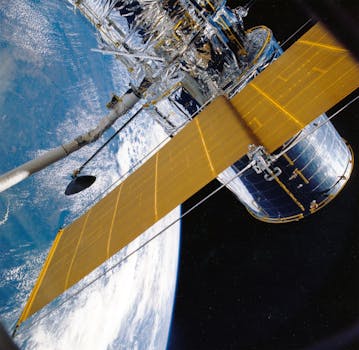GEO Satellites: Unlocking the Power of Geostationary Orbit

GEO Satellites: Unlocking the Power of Geostationary Orbit
GEO satellites, or Geostationary satellites, are a type of satellite that orbits the Earth at an altitude of approximately 36,000 kilometers, remaining stationary relative to a fixed point on the planet. This unique characteristic allows GEO satellites to provide continuous coverage of a specific region, making them ideal for a wide range of applications, including telecommunications, weather forecasting, and navigation. In this article, we will delve into the world of GEO satellites, exploring their history, benefits, and applications, as well as the challenges and future developments in the field.
History of GEO Satellites
The concept of GEO satellites was first proposed by science fiction writer Arthur C. Clarke in 1945. However, it wasn’t until the 1960s that the first GEO satellite, Syncom 2, was launched by NASA. Since then, the use of GEO satellites has become increasingly prevalent, with thousands of satellites now orbiting the Earth. The development of GEO satellites has been driven by advances in technology, including improvements in propulsion systems, power generation, and communication equipment.
Benefits and Applications of GEO Satellites
GEO satellites offer a number of benefits and applications, including telecommunications, where they provide internet connectivity, voice communications, and television broadcasting to remote and underserved areas. They also play a critical role in weather forecasting, providing images and data that help meteorologists predict weather patterns and track severe weather events. Additionally, GEO satellites are used for navigation, providing location information and timing signals that enable GPS and other navigation systems to function.
Challenges and Future Developments
Despite the many benefits of GEO satellites, there are also challenges and limitations to their use. One of the main challenges is the risk of space debris, which can collide with operational satellites and cause damage or even complete loss of the satellite. Another challenge is the congestion of the geostationary orbit, which can lead to interference between satellites and limit the availability of frequencies. To address these challenges, satellite operators and manufacturers are developing new technologies, such as advanced propulsion systems and de-orbiting systems, which can help to reduce the risk of space debris and improve the overall efficiency of GEO satellites.
Conclusion
In conclusion, GEO satellites are a vital part of modern satellite communications, offering a wide range of applications and benefits. From telecommunications and weather forecasting to navigation and Earth observation, GEO satellites play a critical role in our daily lives. As the demand for satellite services continues to grow, it is likely that we will see further developments and innovations in the field of GEO satellites, including the use of advanced technologies and new applications such as satellite-based broadband and Internet of Things (IoT) services.



